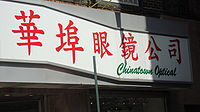From The Peopling of New York City
For All New Yorkers: Immigrants, Culture and Parks
In recent years the issue of immigrants and public parks in NYC have become more and more complicated. Government and non-for-profit agencies have begun to realize that immigrants are a crucial group of users of NYC public parks. This can be a problematic issue because many parks are ill-equipped to accommodate the needs and language barriers of their users.
Many immigrants who come to this country do not know how to speak English, or play the American sports that the parks were designed for. In this case they cannot fully take advantage of what is being offered to them. An organization, called New Yorkers for Parks, issued a report titled Parks for All New Yorkers: Immigrants, Culture and NYC that proposes various improvements and changes to they way NYC parks are run. The 3 major issues that they believe ought to be addressed are:
- Overcoming the language barrier
- Improving the permitting process for sports and special events
- Increasing the diversity of food available in parks
According to their research 1 out of 3 New Yorkers was born outside America, and preferred to relax within his/her own cultural group, rather than connect with the larger community or government. Being surrounded by immigrants from their home country prevents new immigrants from mingling with different cultures and learning the local language. They usually go to work in a place that doesn’t require them to learn English, where they spend long hours everyday. To many of them, neighborhood parks provide an opportunity to spend time with their close ones. For others, parks also provide the open space that immigrants' apartments lack, enabling them to relax.
Unfortunately, to conduct any research on the topic is a very complex process; the demographics of New York City neighborhoods change so rapidly. Additionally each immigrant group needs different allocations that may vary from one place to another. We cannot assume that Latinos living in the Bronx will act, or need what Hispanics in Brooklyn do; therefore each neighborhood needs to be evaluated separately. But what happens if there is more than one ethnic niche using the same park? Is it physically possible to accommodate both South Asians, who enjoy playing cricket and Argentinians, who would die for a soccer field? I believe that the City launched itself on a mission impossible.
The report is based on a research done solely in two parks; Queensbridge Park and Seward Park. To conduct the survey amongst the visitors, a team had to be placed at every entrance to the park throughout the day, the number of people entering and exiting the parks had to be counted, and asked some necessary questions. Conducting similar research in other parks around the City would require tremendous amounts of resources and time. Additionally some parks, for example Central Park, have numerous entrances, and for the data to be accurate each would have to be covered; impossible!
There is also a phenomenon of cultural shifting. For example. a sport that might have been popular 5 yeas ago might be less so today. Secondly, immigrant groups might move from one neighborhood to a different one. In this case the accommodations previously made for them would have to be moved to whatever location they decide to go. How can NYC afford such constant changes?
We ought to also mention problems caused by the language barrier. If there are over 2 million immigrants in NYC there are probably over 100 different languages spoken on a daily basis around the City. Even if the government would dedicate itself to translating signs, it would be impossible to reach every single immigrant group in NYC. “In 2008 the mayor signed an executive order requiring agencies who administer 'direct services' to develop a 'language access plan'.” Under this law the Parks Department will expand signage in foreign languages, translate necessary documents needed to obtain permits, and provide bilingual staff, all of which are based on the local population. However, no additional money has been allocated to sponsor this project. How can this report be revised every single year, hoping to implement all the changes necessary if there is no additional funding? Also if there was a decision made to pay for this project, where would the money come from?
We shouldn’t forget about the issue of cultural differences. The research team behind Parks for All New Yorkers: Immigrants, Culture and NYC, suggests that those signs should be translated to ease immigrants’ participation in local communities. Nevertheless for many of the newcomers it is unusual to do so. In their mother country they might have not believed in strong communities, or cleaning days. For many, a park might simply be considered a place to go and relax, and not one where individuals volunteer or devote their time to help. In this case would the action undertaken by the City be redundant?
- Overcoming Language Barriers
- To ensure timely implementations of the Language Access Plan
- Provide translation services for all public meetings related to park projects
- Navigating the System: Reserving Park Space for Sports and Events
- Increase the transparency of the permitting application process by creating a time-line that clearly states due dates and notification dates
- Explore opportunities to lessen or remove the insurance burden for small, volunteer-based groups
- Offer translated permit applications on the park's website
- Formally declare the grandfathering rule for athletic fields
- Allow new leagues and teams access to high-demand fields, by limiting the number of years that a single group can continuously hold a permit
- Accommodate the work schedule of new immigrants and expand permitted hours of play
- Diversity in the Park Experience: Concession
- Encourage local economic development, welcome diverse cultural groups, and improve concession revenues by seeking out culturally relevant food vendors for parks
